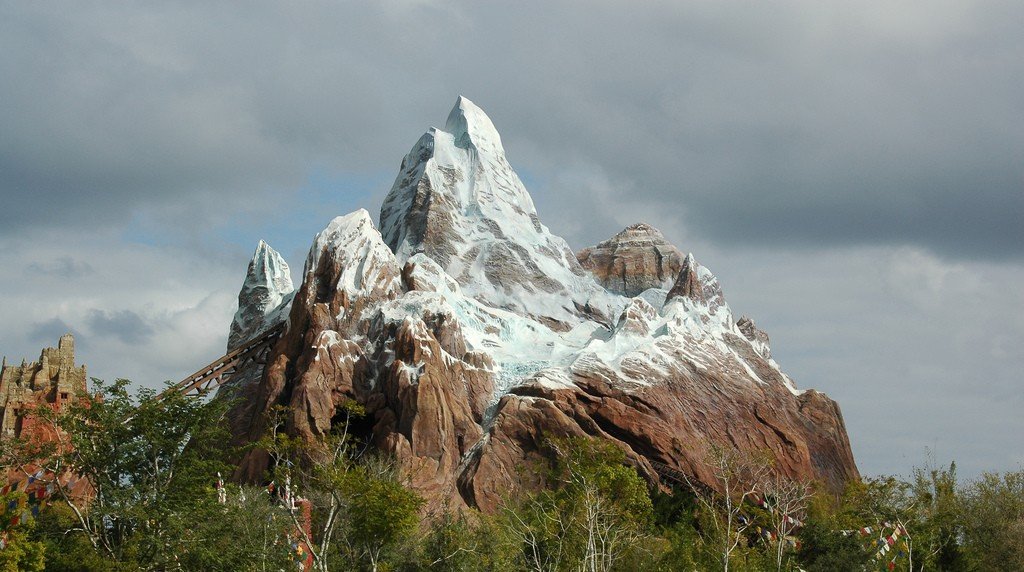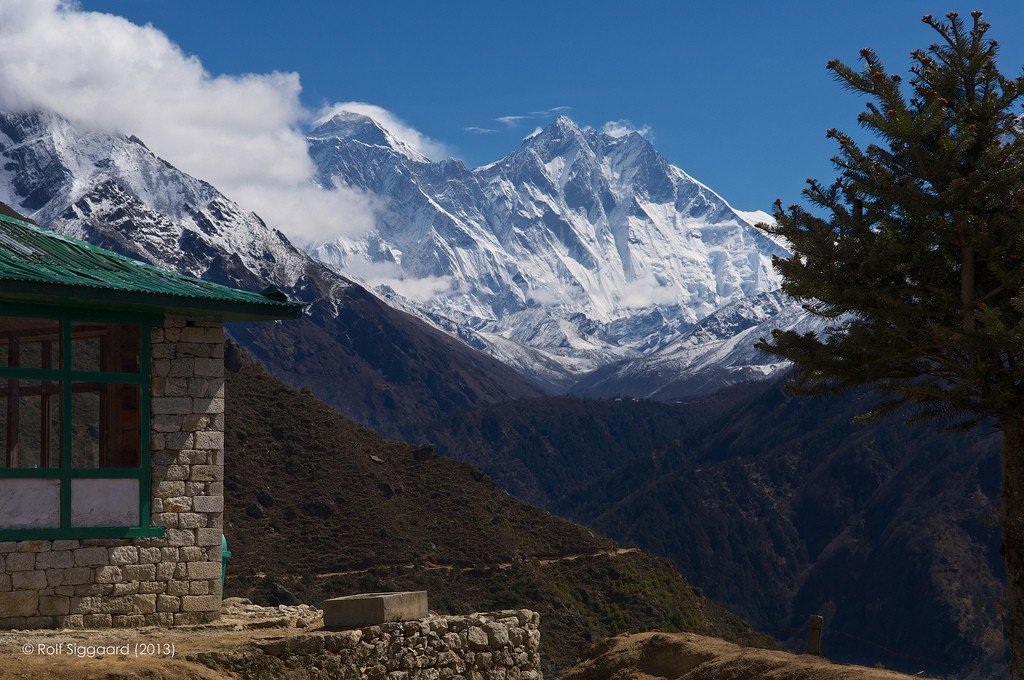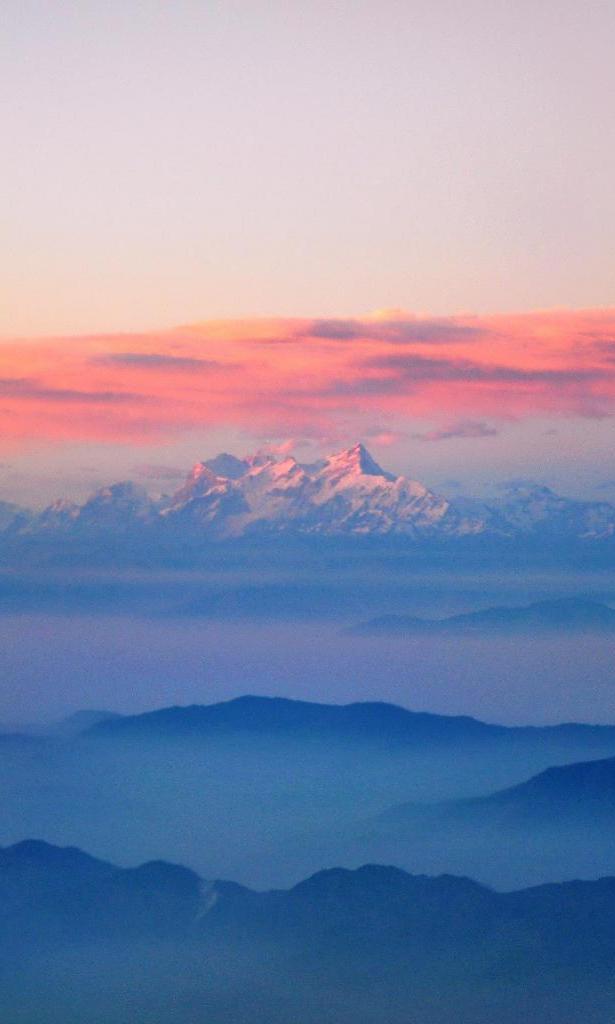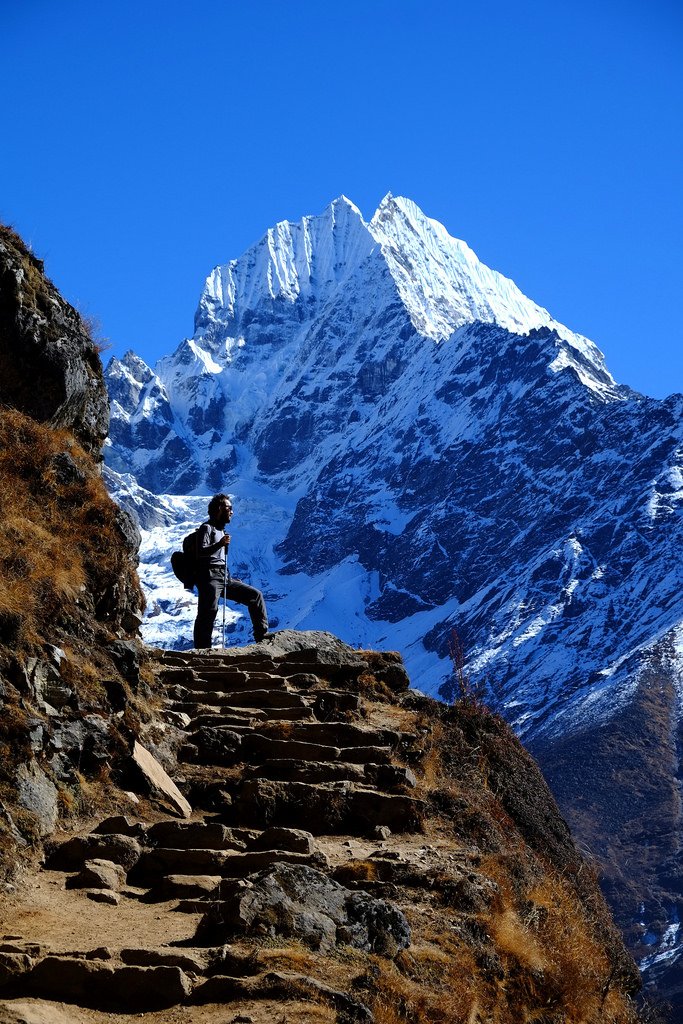Mount Everest (Jomolungma)
The attraction is related to the countries:NepalChinaEverest, also known as Jomolungma, is the highest point on our planet. It has been called, and quite rightly, “the roof of the world”, “divine” and even “the mountain of death”. Many daredevils have dedicated their lives to the desperate idea of taking this height. They were not stopped neither by solar radiation dangerous for humans, nor by the penetrating squally wind, the speed of which reaches 55 meters per second, nor by sudden collapses. More than 260 people found their final resting place in the snows and abysses of Everest on the way to their dreams.
.
However, there is another statistic – an optimistic one. Every year more than 500 thousand tourists come to the highest peak of the globe to admire the majestic beauty of these places. Such an indicator, which has a tendency to grow, allows to include Jomolungma among the most visited sights of the planet. For many people, to visit here means to fulfill their deepest dreams. And when travelers are asked why they aspire to Everest, because the summit is not conquerable by everyone, they answer: “Because there is one!”









Video: “Everest. The Promise.”
Contents- Location and features
- How the height of Everest was calculated
- Who were they, the courageous pioneers?
- Desperate summit climbers
- Extreme cases
- Climatic conditions, flora and fauna
- Environmental conditions
Location and features

How the height of Everest was calculated


Who are they, the courageous pioneers?
.
Englishman George Herbert Lee Mallory, a 38-year-old associate professor from Cambridge and a renowned mountaineer of great experience, was obsessed with the idea of conquering Everest. In 1921, a group under his leadership reached the height of 8170 meters and set up camp, and he himself went down in history as the man who first set out to conquer this proud and impregnable height. Subsequently, he made two more attempts, in 1922 and 1924. The third of them turned out to be the last and… fatal. On June 8, he and his teammate, 22-year-old student Andrew Irwin, went missing. From the ground they were last seen through binoculars at an altitude of about 8500 meters. And then that was it: the intrepid explorers suddenly disappeared from sight…
.Mallory’s fate became clear only 75 years later. May 1, 1999, an American search expedition found the remains of a brave climber at an altitude of 8230 meters. There was no doubt that it was him: he was identified by the patch on his clothes “J. Mallory”, as well as by his wife’s letter found in his breast pocket. The corpse itself was lying face downward with its arms outstretched as if trying to embrace a mountain. When he was turned over, his eyes were closed, which meant only one thing: death was not sudden. Further examination of the remains of Jomolungma’s first victim revealed that the legendary explorer had suffered fractures to his tibia and fibula.
.

Thus, two versions were disproved at once: that of death from a fall from a great height, and that of death during the descent. As for Irwin, his body has not yet been found, although it is obvious to everyone that he also died then. And, most likely, he was then blown by strong winds into the nearest abyss, which is at least 2 kilometers deep.
.
Another famous conqueror of Jomolungma was a British officer and mountaineer Edward Felix Norton, who in 1924 reached the mark of 8565 meters, which was an absolute record that held for the next thirty years.
.Between 1921 and 1952, there were about 11 unsuccessful attempts to climb. In 1952, an expedition from Switzerland twice tried to conquer the summit. But the high-altitude climbers returned with nothing.
.
In 1953, New Zealand climbers joined the British expedition. On May 29, 1953, 34-year-old New Zealander Edmund Hillary and 39-year-old representative of Nepalese Sherpa Tenzing Norgay became the first people on Earth to climb to the “roof of the world”. They spent only 15 minutes there: due to insufficient oxygen, they simply could not go any longer. Norgei symbolically buried cookies and candy in the snow – as an offering to the gods. It’s funny that he couldn’t take a picture of a New Zealander, only a Nepali could be captured on the summit.
.
The world learned of the conquest of Everest only three days later. It is hard to overemphasize the significance of this event. The restless Hillary, along with the expedition, crossed Antarctica a few years later. British Queen Elizabeth II, who is also the monarch of New Zealand, knighted him. The New Zealand mountaineer also became an honorary citizen of Nepal. In 1990, Hillary’s son Peter climbed to the summit.
.After 1953, expeditions from the United States, India, Italy, and Japan were sent to the “roof of the world”. The first American to set foot on the summit of Jomolungma was Jim Whittaker. It happened on May 1, 1963. Some three weeks later, the world was waiting for a sensation akin to its first conquest – American climbers crossed the West Rib, where previously no human foot has not yet set foot.
.
Since 1975, representatives of the weaker sex have been climbing the highest peak on the planet. The first woman to conquer Everest was a climber from the Land of the Rising Sun, Junko Tabei, and a citizen of Poland, Wanda Rutkiewicz, was the first European woman in this capacity. In 1990, the first Russian woman to reach the summit was Ekaterina Ivanova.
.Desperate summit climbers
More than 4,000 people have already been to the summit of Jomolungma. Many more than once. For example, Nepalese mountaineer Apa Sherpa conquered it 21 times. Scientists claim that mountain dwellers find it easier to stay at such a height. Still, the record set by local resident Chhurim, who climbed to the top twice in a week, is surprising.
.Exploring Everest is first and foremost about testing the limits of human capabilities. Italian R. Messner and German P. Habeler climbed the mountain without oxygen masks in May 1978. Messner subsequently climbed alone many times and set a series of records. He was the first to reach the summit during the monsoon, to pass without the help of porters, and to complete a new route in record time. When you study the biographies of such desperate daredevils, you realize that the desire to conquer the summits is like a passion or a disease.
.
In 1982, a Soviet expedition climbed Jomolungma for the first time via a difficult route from the side of the southwest wall. The selection of athletes was similar to the selection of cosmonauts. 11 people made the ascent, one climber was without an oxygen mask, one conquered the summit at night. The photos show that the beauty from such a natural observation platform is extraordinary. Words cannot convey what a beautiful sight it is at night, under the light of stars.
.How the blind American Erich Weihenmayer (2001) and Mark Inglis with amputated legs (2006) managed to get to the top is known only to them. The goal of the daredevils was to show people around the world that reaching their goal is a reality. And they did!”
.Extreme Cases
‘




A mild cold can end up with pulmonary or cerebral edema. The cardiovascular system is working at its limit. Frostbite, fractures and sprains are not uncommon on ascents. And it is necessary to come back down, which is no less difficult.
.“The Longest Mile on Earth” – that’s what climbers call the last 300 meters, the most difficult section. It is a steep, very smooth slope covered with snow. And here it is – “the roof of the world”…
.https://trevaladvisor.com/img%img/Gora-Everestreterte/pokoriteli-everesta-1_2754.jpg” alt=””/>‘ https://trevaladvisor.com/img%img/Gora-Everestreterte/pokoriteli-everesta-2_2761.jpg” alt=””/>‘

Climatic conditions, flora and fauna

In summer, the temperature on Everest does not rise above -19 degrees during the day, and at night it drops to minus 50 degrees. The coldest month is January. It is not uncommon for the temperature to drop to 60 degrees below zero.
.
Of course, in such extreme conditions, the animal and plant world can not be rich and diverse. On the contrary, it is very scarce. However, it is here that the highest-living representative of the Earth’s fauna – the Himalayan jumping spider – lives. Its individuals were found at an altitude of 6700 meters, which seems simply unthinkable for the existence of life.
.
Somewhat lower, at the level of 5500 meters, grows a perennial herbaceous plant – yellow gentian. Even higher, at an altitude of 8100 meters, researchers observed the mountain jackdaw, a member of the vulture family, a close relative of the alpine jackdaw.
.
Ecology

Recently, scientists have been sounding the alarm and calling for access to the world’s highest peak to be closed. The reason is the catastrophic level of pollution on Everest and its surroundings.
.
Everyone who visits here leaves behind about 3 kilograms of garbage. According to preliminary calculations, more than 50 tons of waste have accumulated on the mountain. Teams of volunteers have been organized, cleaning the slopes from traces of human activity.
.
However, modern equipment and laid routes only increase the number of visitors here, there are even traffic jams on the trails. And the flow of tourists to the foot of Jomolungma is growing every year…
.
